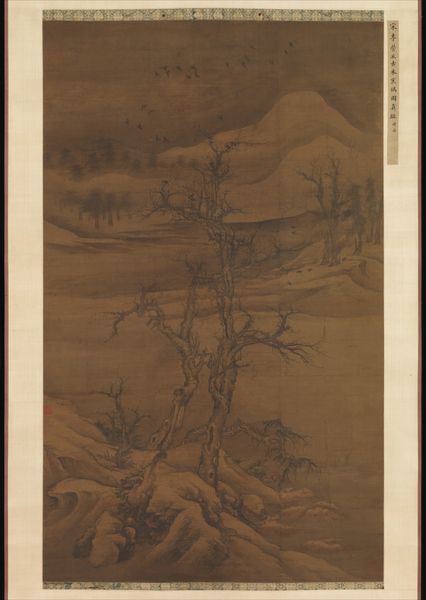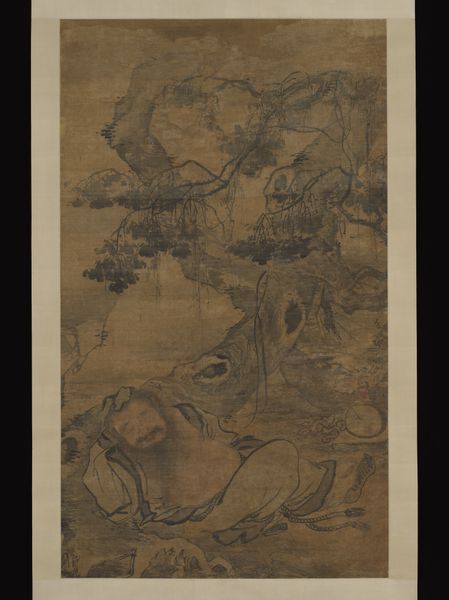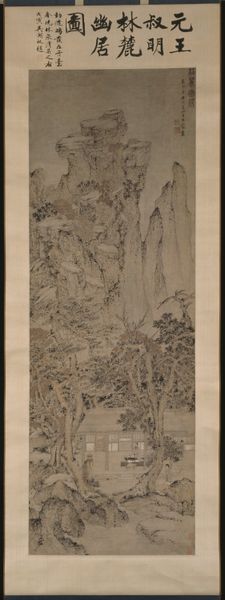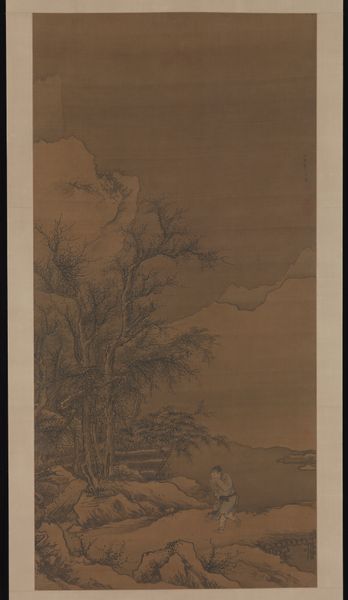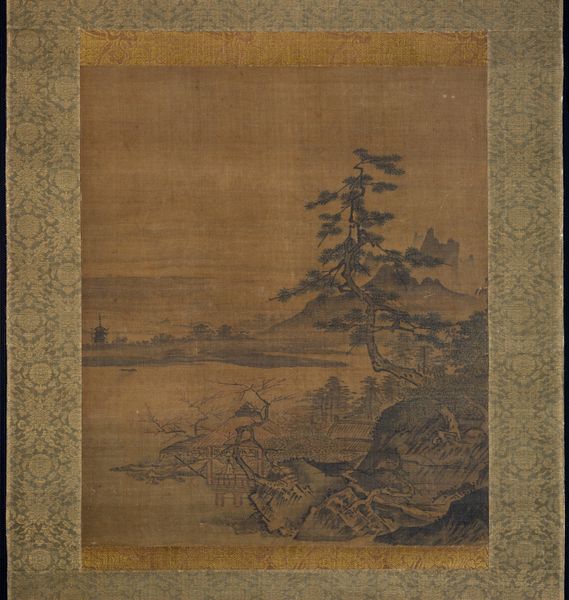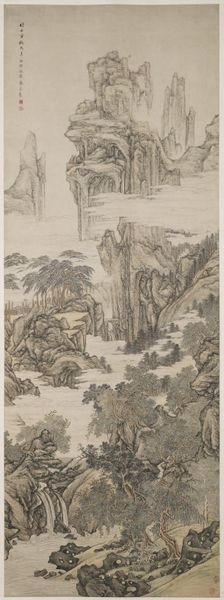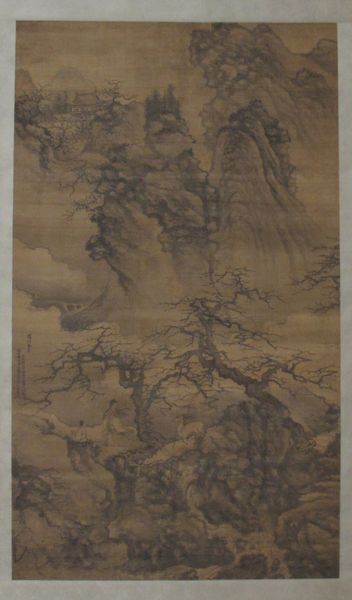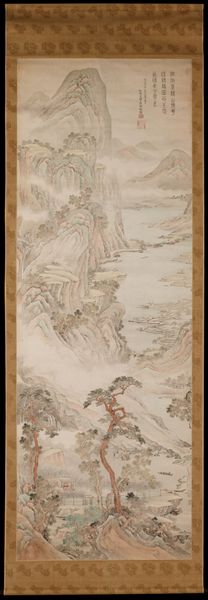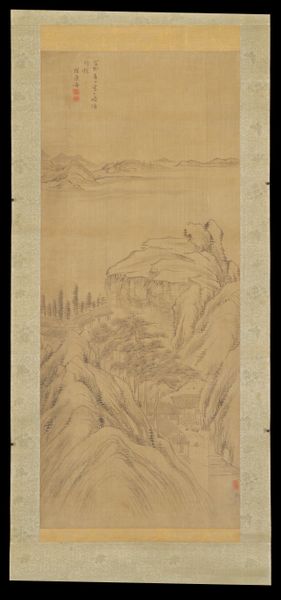
painting, paper, ink
#
ink painting
#
painting
#
asian-art
#
landscape
#
paper
#
21_yuan-dynasty-1271-1368
#
ink
Dimensions: Image: 50 3/4 x 27 1/16 in. (128.9 x 68.7 cm) Overall with mounting: 8 ft. 8 1/8 in. x 33 3/4 in. (264.5 x 85.7 cm) Overall with knobs: 8 ft. 8 1/8 in. x 37 in. (264.5 x 94 cm)
Copyright: Public Domain
Editor: So, this is “Landscape after a poem by Wang Wei” created by Tang Di around 1323. It’s an ink painting on paper currently residing here at the Met. I'm struck by the muted tones and how they create a sense of distance and quiet contemplation. What do you see in this piece, from your perspective? Curator: As a historian, I immediately consider the Yuan Dynasty context in which this painting was created. This was a period of Mongol rule in China, a time when many Han Chinese scholars withdrew from government service. Landscape painting, like this one, became a powerful means of expressing their inner lives and philosophical ideals, a subtle form of cultural resistance, if you will. Do you notice any visual cues of literati painting? Editor: Well, the lack of bright colours, the almost monochromatic palette...it seems more focused on mood than precise representation, doesn't it? Curator: Precisely. The controlled brushstrokes, the emphasis on suggestion rather than explicit detail - all point to a literati aesthetic. Think about it - the artist is not just depicting a landscape, he’s also channeling Wang Wei’s poem, engaging in a dialogue with past masters and a community of like-minded scholars. This piece really reflects the scholar's studio, the book room, and nature’s influence to their cultural expression. Editor: So the act of creating this wasn't just artistic; it was almost a political or cultural statement? Curator: Exactly! And the fact that it's hanging here in the Metropolitan Museum, far removed from its original context, raises questions about the museum's role in shaping our understanding of art and culture, doesn't it? How we decide what to display, what stories we tell - it all impacts how people interpret this work. Editor: That’s a really interesting way to look at it. I hadn’t thought about the museum's role in that way before. It's more than just display, it's also interpretation. Curator: Yes, the social, political, and institutional frameworks are vital in any understanding of art. Glad to hear you agree!
Comments
No comments
Be the first to comment and join the conversation on the ultimate creative platform.
